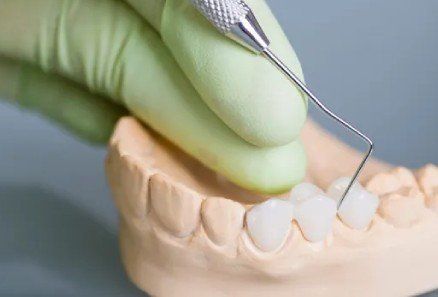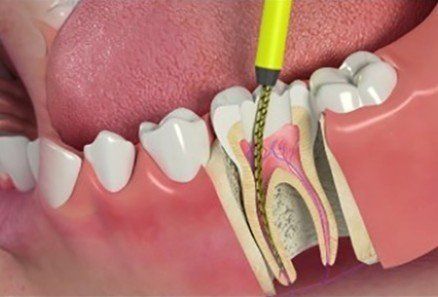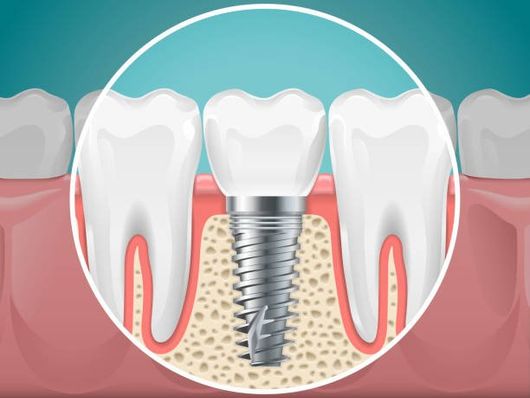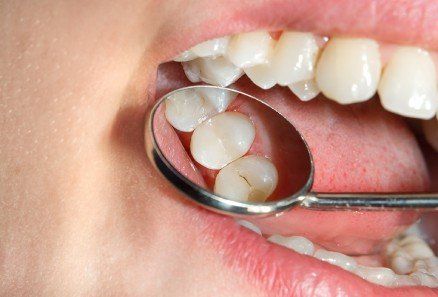Contact : 204-353-4090

Services and Patient Education
01
Family Dentristry
General dentistry is the branch of medicine involving the care and prevention of oral health conditions, diseases and disorders. A dentist's job is to use preventative care and patient education to preclude the need for treatments and instead promote a healthy smile for life. Dentists are also responsible for diagnosing conditions that affect the mouth, teeth, gums and jaws, as well as develop the most effective treatment plan with the patient's best interests in mind.
General dentists typically do not focus on any particular specialty, instead opting to provide generalized dental care to patients. In some cases, general dentists may refer a patient to a specialty provider for care or treatment that is beyond the scope of general dentistry. However, most general dentists are capable of providing complete examinations, cleanings, root canals, restorations, extractions and tooth prosthetics.
General dentistry is best when patients use it for preventive care, rather than for corrective treatment. By visiting a dentist and his or her team of hygienists and dental technicians twice annually for cleaning and examination, patients can avoid decay and identify potential oral heath conditions, such as periodontal disease, in their earliest stages.
02
Tooth-Coloured Fillings
When considering tooth fillings, one of the options available is composite fillings which are made from durable plastics that are similar in colour to natural teeth. Because the composite fillings are tooth-colored, they look more natural and are less noticeable compared to other types of fillings.
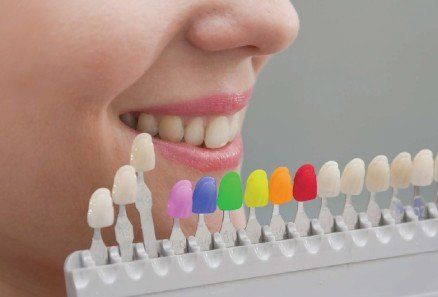
03
Crowns And Bridges
A crown (cap) is a restoration that is placed on teeth that have lost a lot of their structure. There are various types of crowns, ranging from full porcelain to full metal crowns. Your dentist will explain the advantages and disadvantages of each kind for you.
Crowns may also be used to securely attach a bridge if the structure of the surrounding teeth is inadequate. A bridge is a dental appliance that is used to replace one or more missing teeth. They are designed to be cosmetically appealing and to restore proper occlusion. Like crowns, bridges are fully customizable and made of various materials, including porcelain and metals.
Both crowns and bridges are created to match the colour, height, texture, and overall appearance of your teeth. You may prolong the durability of you crowns and bridges by practicing good oral hygiene and visiting your dentist for regular check-ups and cleanings..
04
Veneers
This is one way to quickly get that beautiful smile. Veneers are a thin shell of porcelain that is bonded to the surface of the teeth. This can change their shape, shade, and position to improve the cosmetics of your teeth and smile. They are also used to replace and restore any lost tooth structure where indicated.
Your dentist will do a complete examination of your teeth to determine if veneers are ideal for you. Veneers often provide the opportunity to dramatically transform the aesthetics of your teeth and smile.
Veneers can enhance the shape of your teeth, make your teeth as white as you want, and give you the smile you have always desired. Additionally, Veneers are bonded to your tooth structure, which gives them strength.
Since they are very thin, Veneers are considered one of the most conservative cosmetic treatments available. Most of the time, very little or no tooth structure is removed before placing veneers. Ask your dentist how veneers can improve your smile.
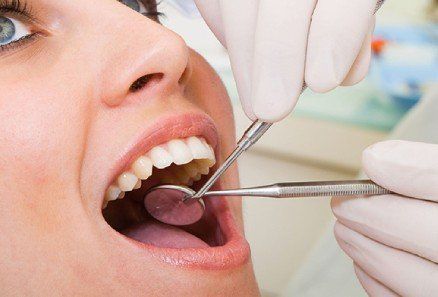
05
Root Canal Treatment
Every tooth consists of three different layers. The outermost and hardest layer is enamel, and the second layer is dentin. The third is pulp, which is the cavernous space where the live tissue and nerve of each tooth is located.
If for any reason the pulp space is exposed to the outside, the tissue becomes contaminated and eventually infected. The exposure of pulp happens in many circumstances, such as when you have a large cavity or a fractured tooth. Your dentist can explain the exact reason for damage to this tissue. In these cases, the treatment is usually root canal treatment.
Root canal treatment is the process of going inside the pulp space and removing the infected, dead tissue. The space is then disinfected and sealed with special materials. Nowadays, root canal treatments are performed with advanced techniques and materials, making them far more comfortable and faster. After root canal treatment is complete, your restorative dentist will usually place a crown on your tooth to safeguard against fracture.
06
Inlays And Onlays
Inlays and Onlays are lab-made restorations that are placed on teeth when the cavity or lost tooth structure is too large to be restored by a simple filling. The process of making an inlay is very similar to a crown. After the tooth is prepared, it is cemented or conned to the tooth.
There are different materials that inlays are made of, including gold, porcelain, and composite resins. Porcelain and composite inlays and onlays are cosmetic alternatives to fillings and are very strong compared to regular white fillings. Gold inlays and inlays are also suitable alternatives, but their appearance makes them less popular.
Your dentist will explain when an inlay or onlay is a viable treatment option for you. In general, inlays and inlays can replace most back teeth fillings and are sometimes cosmetically preferred over conventional fillings. At the same time, they are more conservative then crowns.
As far as cost is concerned, because the process of making an inlay or onlay is similar to a crown, its cost is also comparable. But when considering the longevity of inlays and onlays, they can end up costing less then traditional fillings.
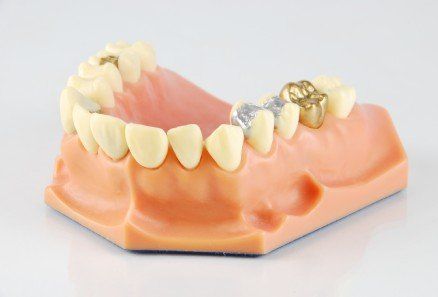
07
Dental Implants
During the last 20 years, dental implants have become a desirable alternative to other methods of replacing missing teeth. Excellent success rates and a range of available options give dentists a variety of new ways to treat and replace lost teeth.
Dental implants play an essential role in restorative dentistry. Because they are permanent prosthetics that are both natural looking and cosmetically appealing, implants can be used either for cosmetic purposes or for complete full-mouth restorations.
Using Dental Implants In Restorative Dentistry
When a single tooth is lost, other teeth surrounding it may begin to shift, resulting in an unsightly appearance. In the past, bridges were the preferred method of cosmetic restoration, but surrounding teeth had to be damaged in order to support the prosthesis. As an alternative, many patients seek dental implants as a means of improving cosmetic appearance following the loss of a tooth. A dental implant has the look, feel and function of a natural tooth, and it's positioning within the bone where the prior tooth was once rooted prevents other teeth from shifting out of place. The result is a visually appealing smile the wearer can be proud of.
- Read more
More info
In some cases, all of a patient's teeth need to be replaced due to decay or other oral health complications. The teeth are vital to communication and digestion, so replacement is no longer a matter of cosmetic preference - but necessity. Options for full mouth restoration are limited to dentures or dental implants More and more patients are choosing implants over dentures, as they provide a permanent solution that requires less maintenance and also preserves more of the natural maxillofacial bones surrounding the teeth.
Who Qualifies for Dental Implants?
Your dentist can evaluate your case and tell you if you are a candidate for dental implants. Structurally, a dental implant is a titanium-based cylinder that replaces the missing tooth root. After a period of time, other parts are placed on the implant to enable your dentist to eventually place a crown (cap) on the implant. Implants can also be used to support full or partial dentures, dramatically improving denture retention and stability.
Most patients with adequate bone mass can have implants, although it caries among individuals. Typically an x-ray and CT-scan are performed to determine if you have enough bone to place the implant, as well as to verify the size and kind of implant that should be placed.
Benefits of Dental Implants
When compared to fixed bridges and removable dentures supported by other teeth or gum tissue, implants offer numerous advantages:
1. Better Esthetics
Since implants are placed in the gum similar to the way a natural tooth is supported, they offer a more realistic and natural look compared to other alternatives.
2. Reduction of bone resorption
When a tooth is lost, the supporting bone structure gradually recedes. Placing an implant in that empty space significantly reduces the speed of bone resorption and provides stability for this valuable tissue.
3. Retention
Patients who have experienced removable full or partial dentures know that keeping their dentures in place is always a challenge. Dental implants offer a great improvement to denture retention for all patients. In some cases the denture can be secured to a group of implants with special screws that stabilize the denture completely.
4. Preserving natural tooth structure
Often the preferred method of replacing a single missing tooth is a bridge. Bridges require extra preparation for the surrounding teeth to ultimately connect 3 or more teeth. This negatively impacts your health by making the task of retaining your teeth more difficult and by often requiring the destruction of existing tooth structure to create room for the new bridge. An implant is mostly an independent unit and does not negatively affect the adjacent teeth.
08
Dentures
Removable Dentures
Though many advances have been made in the field of dentistry, loss of teeth is still an ongoing problem. Currently, there are a number of options available for people who have lost their teeth. One of the most versatile and affordable is a set of removable dentures.
Standard Full Dentures
Standard full dentures that comprise a full set of upper and lower teeth. This type of denture uses suction to stay in place.
Partial Dentures
Partial dentures are dentures that replace only a limited number of teeth, not an entire set. Partial dentures are a single fitting that is supported by the remaining teeth and gums. They are much more secure than standard full dentures and are more comfortable.
Loss of teeth and expensive treatment options don't have to prevent you from continuing to lead a healthy and happy life. Removable dentures are a suitable course of treatment for many people. You deserve to give yourself the best treatment possible.
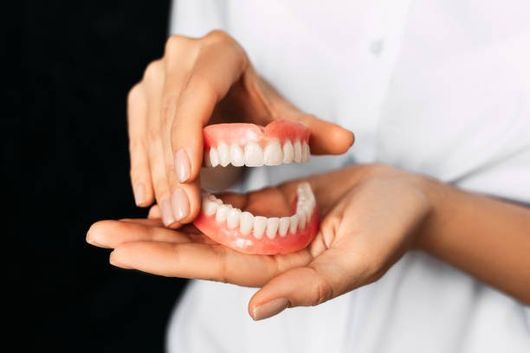
09
Dental Sealants
Sealants are thin layers of resin that are placed on the pits, fissures, and grooves of molars to prevent decay on these surfaces.
The majority of decay on back teeth starts in the grooves and pits of chewing surfaces, especially during the first few years after their eruption. Sealing these surfaces with composite resins prevents this kind of decay.
Sealants are one of the most effective methods of preventing decay on the surfaces where they are placed. Although it is still a possibility that decay may develop on surfaces in between teeth, sealants significantly reduce the overall chance of having cavities.
10
Teeth Whitening
Teeth stains are inevitable due to our consumption of a variety of foods and drinks (soda, spicy food, coffee, etc). However, advanced teeth whitening technology has enabled dentists to whiten teeth without adversely affecting the tooth structure.
Almost all whitening methods are similar in concept, but some are much more effective because of the way the whitening materials is delivered to the teeth. Another contributing factor is the concentration of the material, which is why less potent over-the-counter whitening systems usually don't give patients the results they are hoping for.
The two main methods of professional whitening are tray whitening and in-office whitening. In tray whitening, an impression is taken and a custom tray is made for the patient. Then, a supply of whitening gel is given to the patient and he/she wears the tray for a few hours each day (techniques differ) for a period of time until an acceptable result is achieved. Sensitivity of the teeth is a normal side-effect of this whitening method and is almost always reansitional.
On the other hand, in-office whitening is the most efficient means of whitening. There are a number of different types used, but the process is very similar for these methods; you can have your teeth whitened in one session and achieve significant results. Your dentist can give you more detailed information and help you decide which method is more suitable for you and your teeth.



